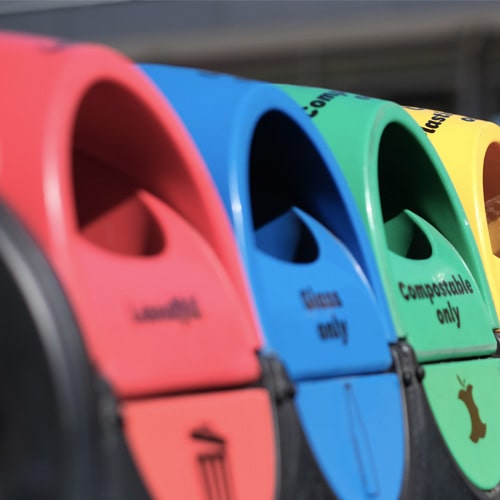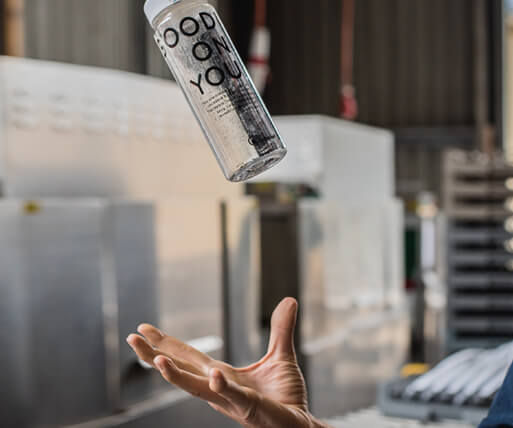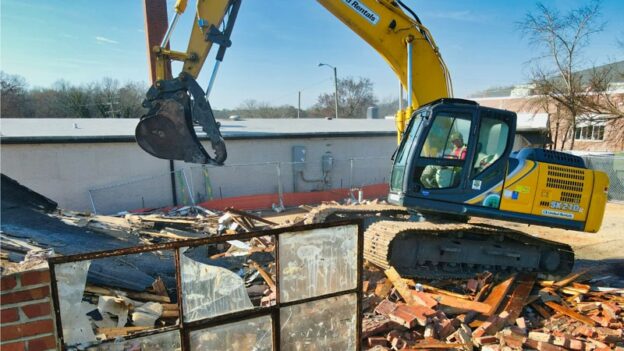The other half of NZ’s waste problem
Published in Bay Buzz
The housing crisis and construction boom are common headlines these days, but what seldom makes the news is the waste created by the sector.
For the average person when we think about waste going to landfill we see the stuff in our rubbish bins at home or at work, but a major portion of what goes to landfill in New Zealand is actually from the construction and demolition sector.
This isn’t to say we can ease up on efforts to reduce household waste. Construction and demolition (C&D) waste, which goes to class 2 landfills, is inert while household waste, which goes to municipal landfills (class 1), can create greenhouse gasses and leachate, and contains a cocktail of chemicals and materials which can be environmentally harmful.
Large volume and lost resources
C&D waste makes up around half of all waste going to landfill in New Zealand, and while its environmental impact in landfill is negligible it represents a substantial loss of resources and energy. Timber, concrete, gib board and metal are some of the most common components of clean fill waste – much of which could potentially have second lives.
Concrete, for example, can be (and in some cases is) crushed and used as an aggregate in the production of new concrete. Window glass, which can’t be recycled with bottles or jars due to its composition, can also be crushed as aggregate. Timber can have further uses if properly recovered.
Cost and behaviour
There are two key factors which drive the lack of recycling or repurposing of C&D waste.
Separating timber, glass, metal and a myriad of other materials from demolition waste is labour-intensive, requires additional space, and isn’t always considered viable but above all it is simply not yet normalised behaviour on a building site.
The second key factor, which drives the decision to landfill this waste rather than recover it, comes down to cost. The labour-intensiveness of sorting and diverting waste, means it’s not always seen as a viable option.
New Zealand’s landfill levy (at $10 a tonne since 2009) is one of the lowest in the OECD. In addition, the levy, set by the government and applied over and above landfill charges, only applies to class 1 landfills. This means all other landfills, including those which take C&D waste, have been exempt from this additional charge. This is set to change though, with new regulations which will both expand and increase the levy.
Following a substantial review, the levy will be applied to all four classes of landfill, with C&D landfills (class 2) beginning on 1 July 2022.
The new regulations also mean the levy will increase between 1 July 2021 and 1 July 2024. For class 1 landfills this will mean an increase from $10 per tonne to $60 and for class 2 landfills it will reach $30 per tonne.
Change is happening
The increased and expanded levy is one mechanism for change. However, there is also a growing desire in the sector, as in others, to reduce waste and use resources more efficiently as part of the social licence to operate.
In his presentation at the recent Building Out Waste 2021 conference Adam Durant of market research agency Colmar Brunton pointed out while there is a willingness to do better, there are very real time and financial constraints to consider. “There is no silver bullet,” he says, and change will need to be incremental with support from external markets and backing through regulation.
This isn’t to say there is no waste reduction and diversion already happening. A number of companies, including some in Hawke’s Bay, are keeping up the age-old business of recovering valuable materials, ranging from timber to fittings and windows, for resale. Items such as taps, door handles and architraves in particular period styles can be valuable.
There are then knock-on benefits such as preserving the heritage of older buildings and creating further employment and income through the sale of the recovered materials.
Target setting
Currently there is a growing body of work, such as trials and case studies, being done by both the commercial sector and government organisations to reduce building and construction waste.
Some examples include Kāinga Ora having adopted the waste hierarchy within its redevelopment site clearances. It has set a target of diverting 80% of site clearance material, by weight, from landfill on all its Auckland redevelopment projects.
Auckland’s City Rail Link project – currently the country’s largest construction project – achieved a 95% diversion rate for construction and demolition waste from its ‘contract two’ work and a 97% diversion from its ‘contract three’ work.
Countdown recently opened its most sustainable store – accredited by Green Star – which reduced construction waste to landfill by 83%. This was achieved by recycling demolition waste where possible, using fly ash in the foundations and recycled aggregate in the asphalt.
Clients and designers
While the companies and contractors doing the building and demolition work are one side of the coin, their clients and the building designers are the other.
The average new build home produces some 4.5 tonnes of waste, yet when building a home the waste which is produced isn’t always top of mind for the client. This isn’t necessarily due to a lack of care, but rather the fact building a home is a large undertaking. As anyone in this position knows, the stress of the decisions, cost, and delays take up most of their bandwidth.
However, creating awareness around the waste and presenting options to mitigate it at the start of the project can make a big difference.
Designers and architects also have a vital role to play in planning out buildings which result in minimal waste. For example, a building designed around standard material sizes, such as the size of gib board, greatly reduces offcuts and waste.
Thought also needs to be given to ensure a building is easily maintained and, at the end of life, can be deconstructed and its materials reused, repurposed or recycled.
Where to from here?
There is no doubt the C&S sector has a long road ahead if it’s to reduce the literal mountain of waste it sends to landfill each year. The continued boom in the sector also increases the urgency of the problem.
However, between the increase and expansion of the landfill levy and the growing desire by builders, government organisations, designers and clients to see better outcomes, I am confident we will see positive change.
Dominic Salmon is 3R’s Business Development Manager
Connect with Dominic on LinkedIn







